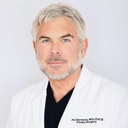Posted underBreast Augmentation q&a
I developed a keloid from a skin cancer biopsy on my upper chest and am fearful that a keloid could develop from BA incisions.
I had a very small spot biopsied from the middle of my chest just below my collar bone. The biopsy site developed a keloid scar which I have never had before! No change from cortisone injections and laser treatments. The ARNP warned me that if I ever get surgery in the chest area, to beware of keloid scarring. I am seriously considering BA but am fearful that I could develop keloids. Can any docs offer any advice/experience with similar cases? (PS-this scar is always exposed to sun.) Thanks!
Answers (8)
From board-certified doctors and trusted medical professionals
More Breast Augmentation Questions
See all Breast Augmentation Q&AWE SEND PRETTY
EMAILS
What’s trending? Who’s turning heads? Which TikTok myths need busting? We’ve got you. No fluff, no gatekeeping—just real talk. Get our free, unfiltered newsletter.





